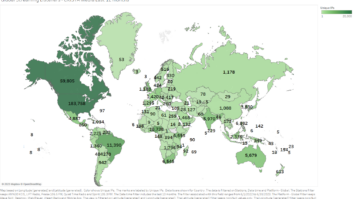It’s budget time! A group’s regional engineer recently explained a technique he has used in evaluating his capital expense lists. Rather than just itemizing in a “wish list” format, he adds a brief one- or two-sentence description of each project and why it is needed.
For example: “New transmitter — the existing transmitter is over 20 years old, repair parts are non-existent and reliability is questionable. Since station revenues depend directly on staying on the air, a replacement is warranted.”
Simple and to the point. Tie in revenue or return on investment to help non-technical managers understand the importance of certain capital projects. I agree with his assessment. When I held a similar role, I always tried to show a cost/benefit to any funds I was requesting.
Many smaller stations don’t budget, but that doesn’t mean they can’t prepare something informally. Is this you? Look ahead to the next 3 to 5 years and list equipment that should be replaced. List items in order of importance and year; it will demonstrate your initiative and planning capabilities.

Fig. 1: Find the Accounting Doctor website at www.theaccountingdr.com. Are you new to capital equipment budgeting or budgeting in general? I’ve got a website for you to visit. Dr. Brian Routh is on the accounting faculty of the Romain College of Business at the University of Southern Indiana in Evansville. He has been an accounting professor since 2002, as well as a state auditor and an accountant. Routh is better known as the “Accounting Doctor” and has developed a website offering numerous tutorial videos on all things accounting. The best part? It’s all free.
Routh has the unusual talent of being able to simplify complex (and sometimes “boring”) accounting topics, so even those of us financially challenged engineers can understand.
In addition to expanding the knowledge for the broadcast engineer, Routh’s tutorial videos are ideal for engineers who are doing contract work. Take advantage of his hours of work and surprise your manager when an accounting term is thrown your way.
Find it at www.theaccountingdr.com.
***

Fig. 2: Tape graph paper on a chassis to ensure that drilled holes are uniform.

Fig. 3: For equipment walls, large sheets of Pacon-brand grid paper works best.
Len Watson, proprietor of Scope+Focus in Chicago, writes that a lot of engineers probably know the trick of gluing/taping quadrille or “grid” paper to a chassis before laying out parts, as shown in Fig. 2. Len thanks his dad for that tip many years ago.
The graph grids make organization easy; and once everything’s laid out, holes can be marked, punched and even drilled — and it all lines up nicely.
Now you can do the same thing in equipment rooms or other large areas. For an installation at WLZK(FM), WRQR(AM) and WMUF(FM), Paris, Tenn., Len needed an “equipment wall.” He found a roll of Pacon grid paper, available in 1-inch or half-inch crosshatching. This is 34-1/2 inches wide (by 200 feet) so you can do a whole wall with a couple of strips, as demonstrated in Fig. 3.
From there, layout of equipment, mounting brackets, wire paths and cable tie pads is easy — no level or ruler required, just mark the positions and install. Do it for no other reason than the ease with which you can mount items with back keyholes like uninterruptible power supplies.
At pacon.com, search for “grid rolls.”
***
Projects engineer Dan Slentz, a fellow Radio World contributor, wrote to share a ground system monitoring module he found. Available from TESSCO (www.tessco.com), the Ventev GTRM 100 is a small, easy-to-install monitoring device that connects to your site’s copper grounding system, creating its own monitoring circuit.
When the copper circuit is interrupted, an alert message will notify the engineer or network operations center through the Ethernet or a contact closure connection. The GTRM 100 was designed to be a smart, simple, economical and reliable monitoring solution to alert engineers of potential catastrophic failures.
Copper theft still remains an operational threat, and the GTRM 100 is an elegant solution to what could be an expensive problem. The GTRM 100 costs less than $350.
We want your tips!You’ll help fellow readers and qualify for SBE recertification credit. Send tips to [email protected]. Fax to (603) 472-4944.
Author John Bisset handles West Coast sales for the Telos Alliance. He is SBE certified and a past recipient of the SBE’s Educator of the Year Award.












